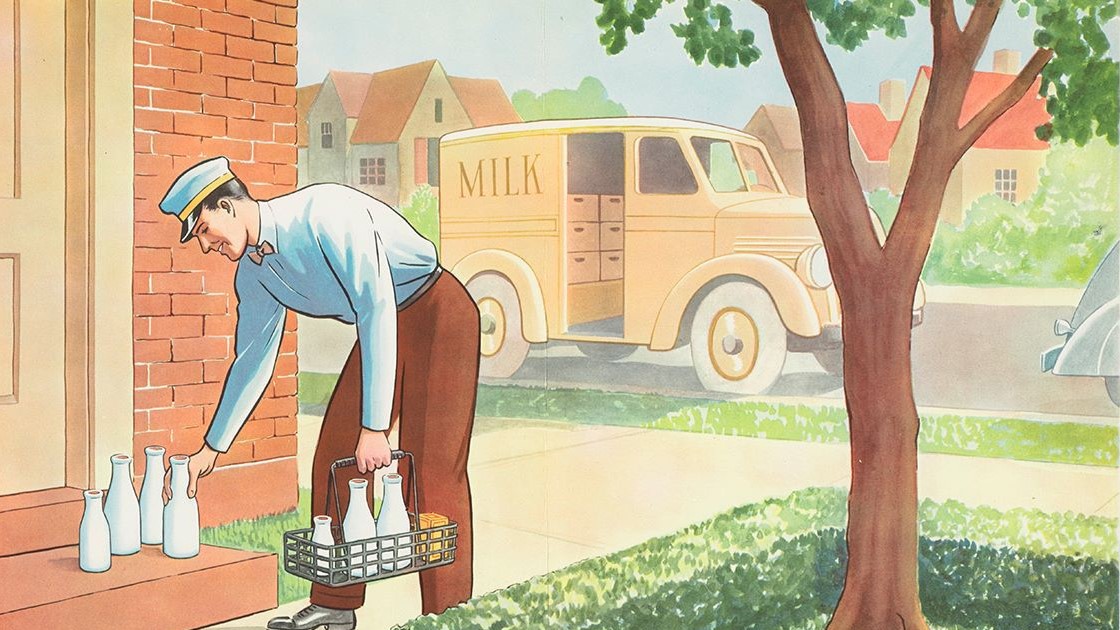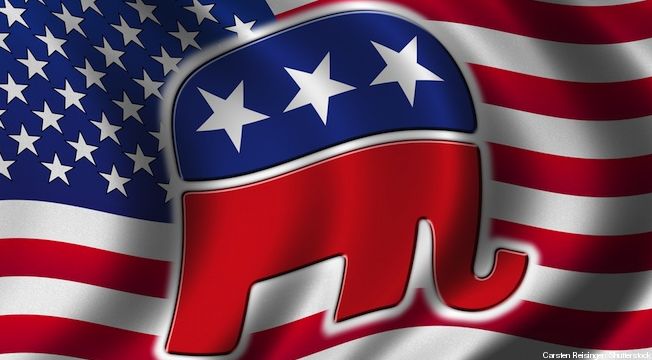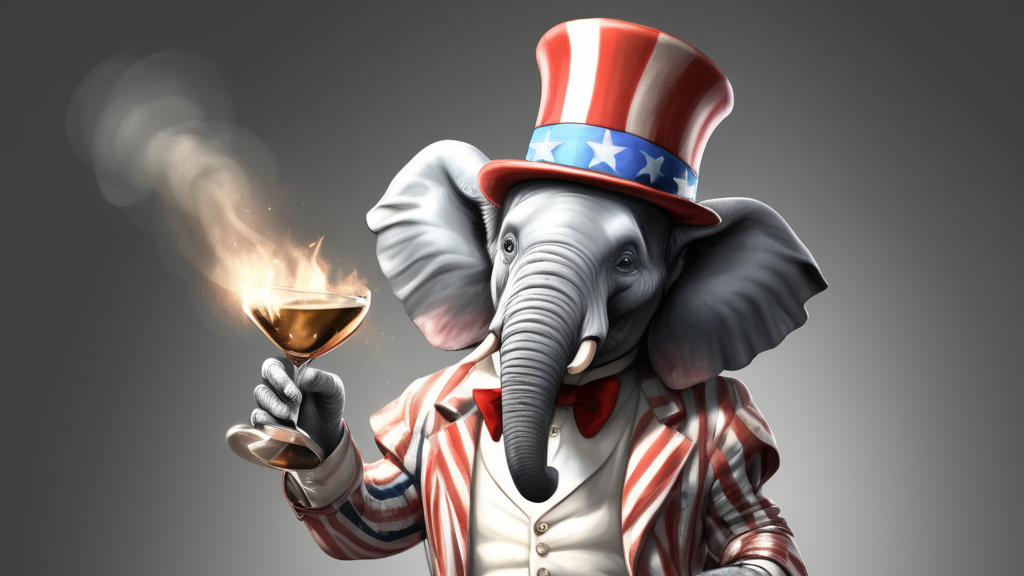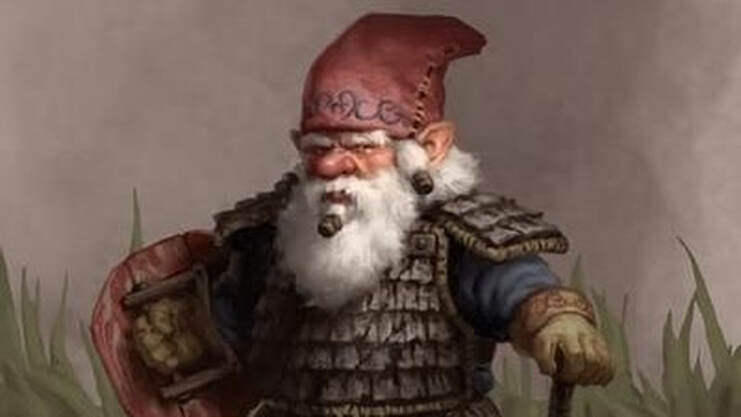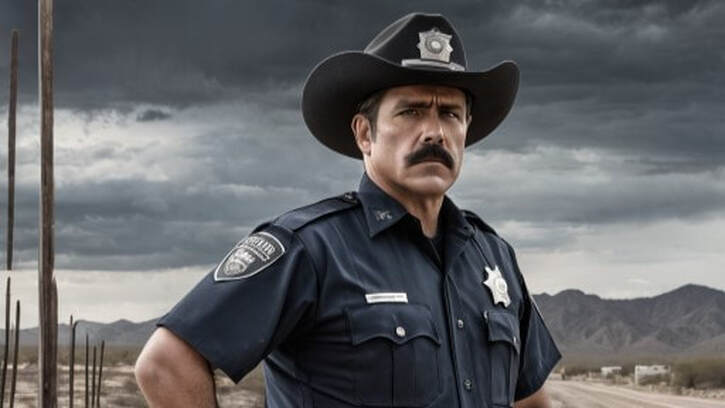|
Having reached the annoying venerable age of 82, I was just thinking of common things I saw every day in my early years. I’ll bet you, dear readers, have not seen any of them. Chewing tobacco and spittoons Snuff, snuff boxes and sticks Rumble seats. Party line telephones. Electric trolley cars Lots of dirt roads in town, not to mention the country Front door deliveries of milk, ice, rare telegrams. And mail twice a day. Mules. Cotton fields as far as you could see and out to the edge of the road. Goats kept behind the house. Nearly every grown man was a veteran of WW I or II. Real biscuits. Buttermilk. 30 cent gas; 5 cent soft drink; 3 cent postage stamp; 10 cent bus fare, hotdogs and movie admission. Soft drinks and beer in real bottles, not cans or plastic. Christmas parades with lively marching bands from black schools. Teachers who actually made you learn or else. Principals and fathers had applicable belts. Of course, they had real content to teach. Nobody had ever seen or heard of a Volswagen, not to mention a Toyota. Likewise an exotic thing like pizza. Prohibitively expensive long distance phone calls, usually only for announcing death. Almost nobody I knew, except veterans, had ever been on an airplane. People with polio and theories about its cause, leading us to hours of swatting flies. Houses, churches, and schools without air conditioning, but with real windows you could open. Only a few immigrants in town, refugees from Communism, which we knew was a bad thing. Doctors who would do house visits. A few politicians left who were genuine Southern orators. Small black and white TVs, getting only one channel, on for only two hours a day in the evening. Doubtless we are now better off in many ways than we were. I suspect there is spiritual decline, however---less personal integrity, work ethic, Christian faith, family loyalty, education quality, more government interference in private society. Better off? You tell me.
12 Comments
Where did people ever get the idea that the Republicans are or ever have been a conservative party? I suppose the idea came about because of their tepid opposition to the New Deal. But the Republican party began in revolution - fanaticism and greed, destroying the Union in favour of a consolidated irresistible government. It was a weird combination of fanaticism and greed. The purpose of the Republican party has always been to use the government for the benefit of the very wealthy. To keep power it has relied on the “respectable,” unthinking middle class Northern population. Aside from fostering Big Business, when in the course of history has the Republican party ever conserved anything? Aside from the Goldwater episode and Trump the party has never nominated a “conservative” for President. Republican Presidents have increased spending, acquiesced in government-enforced social revolution, and given us Supreme Court appointments that with very few exceptions have disappointed conservatives. Through most of the later 19th and earlier 20 century, the real conservatives in national position were Southern Democrats and an occasional populist from the rural Midwest. In fact, the Democrats are now what the Republicans used to be---the party of the Northern elites. Now the Republicans are “conservative” only to the extent they have absorbed former Southern Democrats. That acquisition was a completely cynical move---gathering in voters that never had any intention of listening to. The Republicans remained firmly in the Establishment, which is “progressive” when it wants to be. Reagan made many people feel better, but in domestic affairs his position was tacit submission to the left. Just as the Republican Establishment is now tacitly submitting to the Biden revolution. Every bad thing that we complain of about Biden’s regime was fully precedented by the Republicans under Lincoln and Grant. Everything the Biden Democrats are doing was invented by Republicans: punishment of individuals for criticizing the government, kangaroo courts, marshaling of minority voters while arming and inciting them, government financial corruption at every level, control of communication, the attempt to make a one-party state, enabling indentured foreign labour to keep American wages down, looking out for the interests of Wall Street and the big banks. I could go on. That was what “Reconstruction” was all about. The Democratic Senator from Massachusetts recently pushed through a law to destroy ever trace of Confederate memory from the government. (She even argued for digging up several hundred Confederate graves from Arlington, too shallow to know that a great many sons and grandsons of Confederates are buried at Arlington for their service for the U.S.) President Trump vetoed the bill. Congress passed it over his veto with 109 Republicans voting against their President. Some of them Southern, the shallow, empty-suit politicians who have been groomed by the Republicans for public office. The new Republican speaker of the House is one of them, already solidifying his place in the Deep State Uniparty. For decades under both parties the U.S. government has engaged in catastrophic spending and debt. For decades under both parties the U.S. government has engaged in failed, illegal, counterproductive wars. It is now under both parties bankrolling two criminal states in war and interfering in the internal affairs of numerous other countries. Under the present Biden regime: Borders have been abolished and the American people are being replaced. Unelected judges and bureaucrats are in a concerted campaign to eliminate freedom of speech by punishing individuals who have spoken against government policy. The same powers are interfering in private life to impose conditions that are opposed by the people, counter to civilisation, and repugnant to common sense. Can you name one thing that any Republican in national office other than Trump has done to oppose the Biden revolution? It looks like Trump, due to uprising at the grassroots, has the Republican presidential nomination. Of course, the future is open. In a society where millions of people want to put a former President in prison and will do anything to prevent his reelection, assassination is a next step. What do you suppose the mainstream Republican leaders are doing now that Trump has the nomination? Are they studying how to support their incoming President and the policies demanded by his supporters? Don’t count on it. When Romney, Johnson, Rubio, Cotton, the Bushes, and such ilk get together, they are studying how far they can pretend to support Trump without endangering their flattering and profitable places in the Establishment. They will do nothing to support the reform agenda. It is not in their character. Their world is posturing and posing on the advice of advertising experts. It never occurs to them to consider the welfare of the people and the commonwealth. Their only idea of competition is maneuvering for place in within a meaningless party machine. They will be the biggest obstacle to achieving any change under a Trump administration. The new Republican Speaker of the House was elected as a pretend conservative. He is nothing of the sort. He strives to be a member of the Establishment not a leader of reform. His every spontaneous statement reveals him to be a standard liberal. How do you identity delusory thinking? A few examples: It is normal and beneficent to allow children to change their sex if they want to. American elections are always completely fair and honest and to say to the contrary is false propaganda that undermines democracy. A rowdy but unarmed walk by the people through their Capitol is an insurrection. Military action in remote parts of the world, sometimes in behalf of former enemies like ISIS, is a mission to spread “democratic capitalism.” Post-Soviet Russia is a threat to the United States. Murdering women and children is the proper response to “terrorism.” There is not enough talent among Americans so expert foreigners must be imported to make our corporations work. America is really just an idea that allows anybody who believes in it to come on in. Affluent government-paid people inside the Washington bubble know what is best for ordinary Americans, who should stop their ignorant populist complaining. The death of a criminal thug in police custody in Minnesota requires the destruction of 100 year old Confederate monuments. “A war against a foreign country only happens when the moneyed classes think they are going to profit from it.” --Orwell Our U.S. armed forces, which claim to be the best in the world, abandoned $86 billion worth of arms in Afghanistan after their failed war. $86 billion. Under Joseph Biden more illegal aliens have entered the U.S. than the population of 35 States. Only a slight number of Republicans in public office are trying to do something about this. Jimmy Carter was our last Christian President. He had many serious defects, but as President he did not repeal the Glass-Stegall Act, bailout criminal bankers, start illegal and counter-productive wars, or tear down any Confederate monuments. How much longer do I have to wait for my “peace dividend”? The once celebrated "American Dream” is now only a dream. Was it ever anything else? I recently saw a catalog of books published by the U.S. Communist Party in 1944. Every one of their positions on the War between the States and Reconstruction is now mainstream. The ongoing genocide in Gaza tells you everything about the moral character of the American elite. Voters don’t win elections; donors do. The first destruction of a Confederate memorial was by Republican George W. Bush, who removed a plaque from a state building in Austin years before Democrats got into the business. The destruction of memorials is intrinsically and historically a barbarian act of hatred and vaunted supremacy. Republicans are shallow and short-sighted and always evade responsibility. For instance, they deplore the anti-Americanism of a group of foreign women (Somalian, Puerto Rican, etc.) in the U.S. House of Representative. But except for immigration policies that most Republicans voted for, the “anti-American” Representatives would not even be here and elected to Congress. Republicans deplore the Supreme Court Justices of Roe v. Wade although most of them were appointed by Republican Presidents and received confirmation endorsement by Republican Senators. Republican officials declined to enforce the law and prevent destruction of the Calhoun monument in Charleston. In Congress they made no significant effort to prevent destruction of the reconciliation memorial. You learn a lot about the Republicans from Neil Kumar’s opponent in a recent primary election in Arkansas. When Neil brought up the question of immigration, his incumbent opponent babbled about the need for imported talent. Obviously he had never even thought about the issue. He was just blabbing Republican boilerplate created by ad men as talking points. The national Republicans cultivate and support for office ambitious mediocrities without any ideas or principles. Another example: the recently elected Speaker, now asking for money from conservatives, in every recorded spontaneous remark is leftist. Last but not least, most Republicans bankrolling and applauding the ongoing Israeli murder of innocent women and children. They have no moral or intellectual thought about the matter---they just know that being against “terrorism” and for Israel play good with the media. But being shallow and short-sighted people, they may have outsmarted themselves. Honest Americans think they have the protection of the law. That is not true. Only the rich can now afford the law. World War Two ended 80 years ago. Why do we still have troops occupying Germany? The Soviet Union collapsed a quarter century ago and the Russian people want friendship with Western people. What reason can there be for NATO, which was created as protection against the Soviet Union. to keep expanding to their borders? Especially since it was specifically promised to them that NATO would never move an inch further East. Two reasons: 1) U.S. leaders are still fixed in a Cold War mentality, which is highly profitable to their campaign donors. 2) U.S. “foreign policy” controllers (neoconservatives and neoliberals) have a visceral hatred of Russia dating back to previous times. Neither of these reasons have anything to do with defending the American land and people. How did so many of us succumb to the swindle that dropping bombs on innocent people halfway around the globe is “national defense.” The U.S. provides more than 2/3rds of all expenses of NATO for the defense of Europe. No major European country spends even as much as 2% of the GDP on defense. How is it that NATO expansion became an instrument for imposing WOKE policies on foreign nations? When President Trump hinted about withdrawing from NATO, he was pounced on publicly and privately by every bigwig of the Deep State. Perhaps we should start referring to the Deep State as the Dark State. Putin makes most Western leaders look like ignorant, weak clowns. No wonder they hate him. Ancient persons like me remember when dealing with Big Business by phone you reached polite, friendly people. Now you are forced to go through steps of punching numbers that are quite often irrelevant to your purpose. Think about it. You, a free American, are a robot obeying a machine. Even your doctor is doing it now. Or else you try to deal with a foreigner with incomprehensible singsong Hindu English. The U.S. Food and Drug Administration is keeping all records relating to its approval of the Covid vaccines classified until 2476. Congress passed a law saying that pharma companies cannot be sued for bad consequences of the vaccines. Testing periods for vaccines are usually 10 years. For the Covid jabs it was about two months. The U.S. government refused admittance to white visitors from Europe who were unvaccinated while turning loose into the interior millions of unvaccinated illegals. GoFundMe tried to steal $9,000,000 contributed to the Canadian truckers movement and give it to BLM. Ilana Mercer’s great label for the U.S.: Walmart with Missiles. Two candidates for the Republican nomination for President of the U.S. are from the Indian subcontinent. What would Founding Fathers say? What would any American have said up to the last 25 years? No television set has been manufactured in the U.S. since the 1970s. The semiconductors in all your communication devices come from China and India. American capitalists are causing prosperity—in China and India. There are serious problems in the U.S., requiring high talents of real statesmen to deal with: catastrophic debt, military over-extension and incompetence, falling living standards for the middle and working classes, growing inflation, unemployment, especially among the rising generation, destructive malicious invasion by illegals from every place in the world. Every one of these problems has been caused by the U.S. government with mainstream Republican support. When did you hear about any of these problems from a major spokesperson from either political party? Republicans are good at superficial hints at the problems, which they promise, rather unspecifally, to solve. That is, Republicans mouth boilerplate supplied by their ad men without giving any real thought to the matter. And they are good at blaming China for economic problems caused by our own corporate/political elites. I like gnomes. They are good-natured and hard-working. But like and other groups they occasionally turn out a bad character. Take Dr. Fauci. Shallow ignorant politicians lacking any integrity always say at once what they think will make them viewed favourably. Linsey Graham and Nikki Haley both came out with resounding endorsement of the Israeli military action on the first day. They are not honest and far-seeing enough to know that they were committing themselves to support what would become ongoing genocide. The attempt by both them to position themselves as leaders in foreign affairs is a joke that they probably still don’t recognise. They are posturing without any thought beyond the moment. As a citizen of the United States, willingly or not, you are bankrolling and approving a foreign country that is committing obvious genocide. You are vetoing in the United Nations every condemnation and attempt to relieve the genocide, although we were taught that the U.N. is a place for humane representative world opinion. Terrorists are small groups committing violent acts against occupying powers. There is nothing surprising about a terrorist group fighting back against the occupying power, even with unconventional methods. However, a terrorist act DOES NOT JUSTIFY the occupying power killing the women children in the occupied area. And all our Americans supporting the genocide are the same people who react indignantly to any other offense around the world that oppresses non-white people. And the same people who have been busily inviting Muslims into the U.S. for half a century. A government that is as deeply into dysfunction as the U.S. today is very close to failure. There is no need to be sympathetic to Islam, which is a dubious creed whose adherents often fight among themselves and show little fellowship. Yet Islam is the faith of millions and they have quite as much right to be free of foreign occupation as any people. Joe Biden is a horror as President. The only reason he is President is because Barack Obama chose him as Vice-President. At that time he was without any standing as a national figure. Did Obama pick the worst man he could find? The current resistance of the Texas authorities to illegal acts of the rulers of the U.S. government is important and heartening for two reasons. First, it reflects the real “Constitution for the United States,” which has long been in disuse. In the real Constitution the States have the right to interpose between their people and the government’s unconstitutional acts. Abuse of power and violation of the law by federal rulers is by definition tyranny---an affront to government “of, by, and for the people.” Secondly, Texas has raised the principle of the right and responsibility of “the lesser magistrates,” to oppose the tyranny of higher authorities. Any just regime has magistrates to enforce the true laws, to protect the innocent and punish the guilty. When the situation arises these officials in their lawful capacity can rightfully counter the illegalities of the “higher” authorities. (I thank Reckonin' commenter Roscoe for reminding me of this.) This idea was a deep aspect of the American case in the War of Independence. Unfortunately we have a multitude of examples of lesser magistrates violating their duty to distinguish right and wrong. Take the notorious case in Minnesota. The governor, mayor, attorney general, prosecutors, and judges all took the side of the lawbreaker and condemned the law enforcer. The lawbreaker got universal praise, a gold casket, and a monument. The law enforcer got massive slander and prison. But, after all, the policeman was considered sacrificable as one the “delporables,” ordinary white people disdained by our sophisticated rulers. Long ago, during my misspent youth as a newspaper reporter, I saw a revealing incident. There was a minor conflict at a local restaurant. The newspaper’s most popular columnist inflated this into a crime wave in the better part of town. The mayor immediately announced his alarm and opposition to this development, without any assessment of the facts. He was simply, like all politicians, immediately doing what he thought would be popular. No consideration of truth or falsehood, good or evil, ever entered his head. This exactly describes Joe Biden’s reaction to any reported incident possibly to be considered as offensive to black people and all good citizens. It was an occasion for virtue signaling that would be praised by the media. Why else do so many of our politicians of both parties warmly embrace the genocide going on in the Mideast? The fact is they are shallow and ignorant men and women who have no real interest other than self-promotion (vanity and greed). The stand of Biden, other authorities, and the media convinced the world that a police reign of terror against black people was a fact of American life. An honest and patriotic President would have told the world that such was not the case, that in fact blacks were 18 times more likely to kill policemen than the other way around. We have no politics, no rational debate or discussion of ideas and policies at the mainstream level---only advertising. That is that state of our “democracy” today. We can only be hopeful about the current acts of the Southern “lesser magistrates.” And hopeful that a future Judgment will expose the real minds of our politicians and provide an appropriate punishment. |
AuthorClyde Wilson is a distinguished Professor Emeritus of History at the University of South Carolina He is the author or editor of over thirty books and published over 600 articles, essays and reviews Archives
July 2024
|

